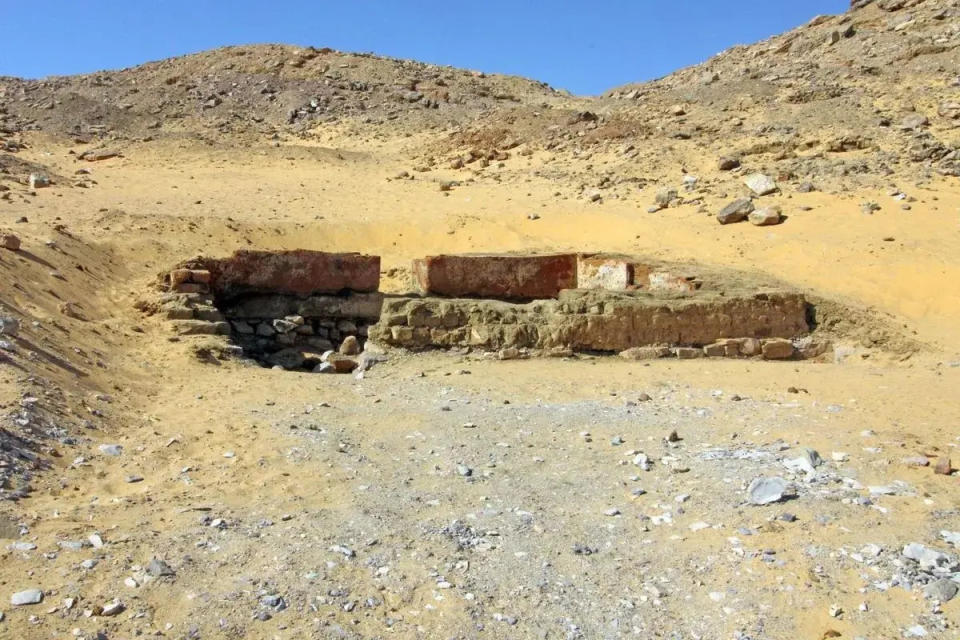Archaeologists have discovered a “City of the Dead” in Aswan, Egypt near the Mausoleum of Aga Khan III, putting an end to five years of digging. Three hundred tombs housing ancient mummies were ultimately discovered on a burial plot spanning 270,000 feet.
According to Egypt’s Ministry of Tourism and Antiquities, officials believe that each of the tombs contains about 36 mummies, which would mean there are roughly 100,000 mummies located within the fairly small gravesite.
It’s believed that the site was in use for about 900 years, between the 6th century B.C. and 9th century A.D., by citizens of the ancient city, then known as Swenett. When it was founded 4,500 years ago, Aswan was a military post and an important trade location which housed a vast granite quarry at the base of the Nile River.
“Aswan was a crossing point since forever,” said Patrizia Piacentini, an archaeologist at the University of Milan. “People were coming from the east to the west. People came here because it was the border, products from the south arrived in Aswan and then dispersed everywhere else.”
” src=”https://s.yimg.com/ny/api/res/1.2/QgV9_D91npwOgBdYl4MHoQ–/YXBwaWQ9aGlnaGxhbmRlcjt3PTk2MDtoPTY0MA–/https://media.zenfs.com/en/men_s_journal_718/9fc0362f3bb31112cc466c15974e2591″ class=”caas-img”>
Ministry of Tourism and Antiquities
” src=”https://s.yimg.com/ny/api/res/1.2/STXUL0fQJZ4jeVMrkdpqpA–/YXBwaWQ9aGlnaGxhbmRlcjt3PTk2MDtoPTY0MA–/https://media.zenfs.com/en/men_s_journal_718/e348f7ea175587a538c4786355d3230b” class=”caas-img”>
Ministry of Tourism and Antiquities
The ministry estimated that between 30 and 40 percent of the remains belong to infants and young children who succumbed to diseases such as tuberculosis, anemia, and organ disease. Many of the tombs were decorated with funeral gifts such as pottery and wood carvings.
“This was a really spectacular find, very unique in Egypt,” Piacentini enthused. “[Aswan’s citizens] covered the hill with tombs. It is kind of a City of the Dead.”
” src=”https://s.yimg.com/ny/api/res/1.2/w1CGZj9CWaPjBNeatXokJQ–/YXBwaWQ9aGlnaGxhbmRlcjt3PTk2MDtoPTYzOQ–/https://media.zenfs.com/en/men_s_journal_718/52e59b110d756a470493cbbf13a212ba” class=”caas-img”>
Ministry of Tourism and Antiquities
” src=”https://s.yimg.com/ny/api/res/1.2/3gvN_NNBfaKVq7Rjr_uB2A–/YXBwaWQ9aGlnaGxhbmRlcjt3PTk2MDtoPTY4Mw–/https://media.zenfs.com/en/men_s_journal_718/d4c818430ad90682e273d1c963dd0479″ class=”caas-img”>
Ministry of Tourism and Antiquities
Archaeologists first discovered the City of the Dead in 2019, when they unearthed a family of four who lived more than 2,000 years ago. Subsequent digs unearthed dozens of further tombs, and scientists quickly determined that the bodies were buried according to class, with society’s most elite buried at the top of the hill.
The most well-preserved mummies will be sent to various museums for preservation and exhibition, but most of the remains will be returned to where they were found.
“This is their resting place,” Piacentini explained. “We uncover their story and then we put them back and close the tomb. For me, [that] was important from the beginning.”
EMEA Tribune is not involved in this news article, it is taken from our partners and or from the News Agencies. Copyright and Credit go to the News Agencies, email news@emeatribune.com Follow our WhatsApp verified Channel





